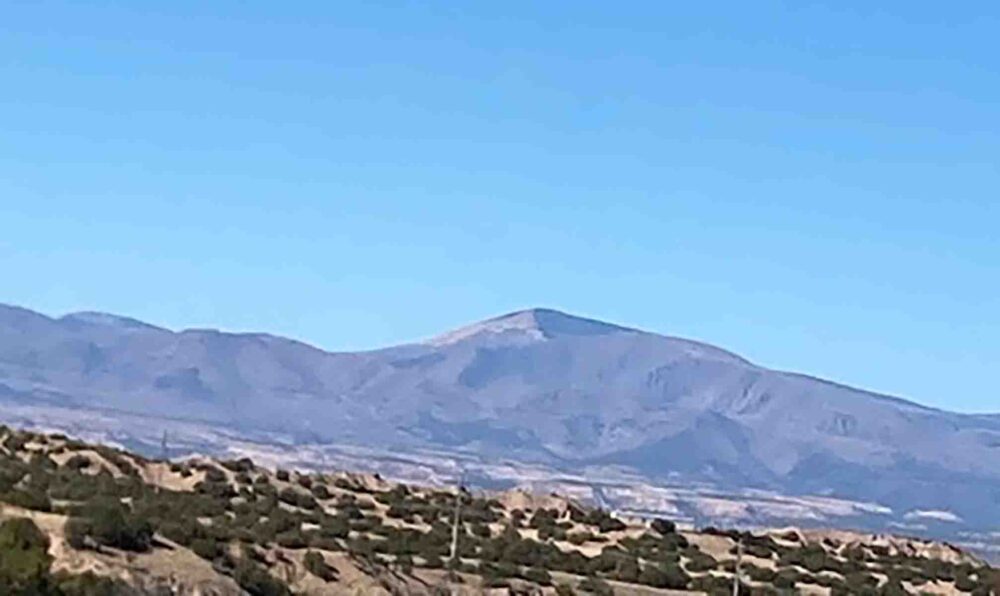By Terry Foxx
“If the groundhog sees his shadow on February 2, there will be six more weeks of winter.”
It’s early December, but soon Punxsutawney Phil, now snuggled in his burrow, will come out and see his shadow — or not — on February 2! This tradition started in about 1887 when local hunters went on a groundhog hunt and then feasted on their prey. The story was embellished with Phil boasting weather observation skills and has been celebrated ever since. These folkloric traditions usually have a grain of truth — or science. Science has proven that Groundhog’s Day observations are connected to El Niño.
I love folklore! I’m a storyteller but I am also an ecologist. So I wondered what the kernel of truth is in the old folklore traditions. After all, they are stories in the making.
Observations are the key! When ancient peoples lived close to the earth, they became good observers, mostly for safety, protection, and understanding. The weather was either an enemy or a friend. Plants, animals, and insects could help them understand the future.
Punxsutawney Phil’s folklore is a holdover from the European era when people watched hedgehogs, badgers, bears, or wolves to see if they saw their shadows on Candlemas, February 2. In the US, that translated to groundhogs! But alas since 1988, according to the National Climatic Data Center (NCDC), Punxsutawney Phil has been right only 39% of the time! The scientist in me says “that’s a pretty poor statistic!”
So how does Phil’s activity relate to El Niño (Spanish for “The Little Boy”)? El Niño frequently produces a cool early winter, warm mid-winter, and cool late winter. So if Phil was wandering around in a sunny, mild winter, he might see his shadow. Yes, a small or maybe tiny, grain of truth! But there have been 26 El Niños since 1900. Hmmm …

My husband has been observing the weather ever since I have known him. He grew up on a farm and freezing weather meant starting smudge pots to save the fruit. Being weatherwise was economically essential. Since we have been in Los Alamos he has been observing when the snowdrift disappears from Chicoma (sometimes spelled Tschicoma) Mountain, one of the highest peaks in the Sierra de Los Valles (Jemez Mountains). One year the snowdrift never formed (a fire year). The earliest disappearance is March 15 (another fire year). The next earliest was April 15 (another fire year). The typical snow disappearance is around May 15, and the latest he observed was June 26. As he notes and passes on his observations, a new tradition begins and eventually, his observations will be folklore.
So, here’s our folklore based on his observations: “When early the snow disappears from the high peak, beware, fire may be in the air.“
Here’s one for you to test this winter: “Mushrooms galore, much snow in store. No mushrooms at all, no snow will fall.”
When I mentioned this folklore quote to my fellow blogger, Sue Watts, she said. “Oh my, I have never seen so many mushrooms as this year!” Since New Mexico has been in a drought, we all wish for lots of snow (in the forest, not on the roads!). Watch to see if our mushroom folklore is just fanciful fun or has a kernel of truth!
By the way, the NCDC says La Niña is back for the second year. The typical La Niña winter brings rain and snow in the Northwest and unusually dry conditions to most of the southern tier. There may be little relief from drought (prediction Oct 17, 2021). So, who is right? Mushrooms or meteorologists?
When we think of winter, we think of cold. We watch the weatherman for his predictions and hold those folklore sayings in our minds. But nature still beckons us outside. Fresh air can make a difference in our moods.
Here are some things you can observe in your journal in the colder months ahead:
- What colors do you see?
- What birds are still around?
- Are there clouds? What kind?
- What can you hear?
- Find your favorite perching place and go back again and again. What changes do you experience? Write them down.
- On the winter solstice (December 21) stand on the Los Alamos Nature Center’s outdoor clock at noon and measure your shadow. This will be the longest shadow of the year.
Winter is a time of rest and recovery but also of gratitude. Give thanks for our earth, the sun, and the natural world.
Bundle up, get out in the cold, and observe. See what nature has in store! What is the kernel of truth we observe in nature?
If you enjoyed this blog, consider joining our new email group, called “Let’s Journal.” Members can share observations and Sue and Terry will provide hints about writing or drawing what you observe. Request to be added to the email list by emailing publicity@peecnature.org.
